Kapalua Surf Lessons: A Complete Guide for All Levels
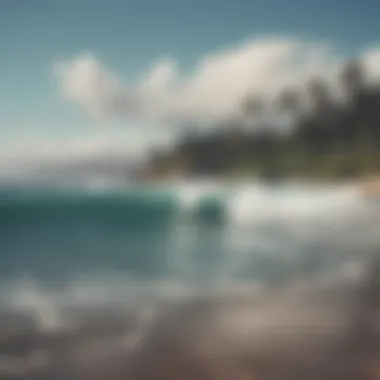
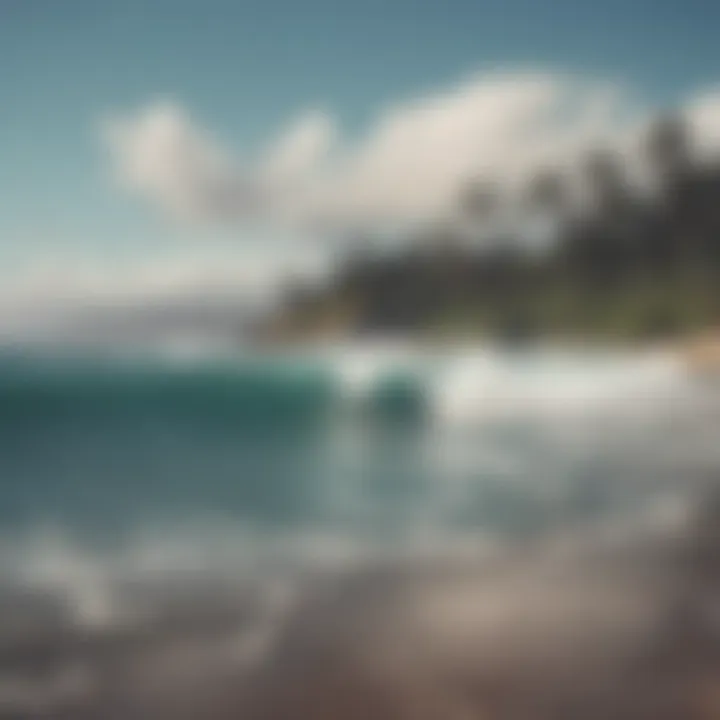
Intro
Kapalua, situated on the beautiful shores of Maui, holds a treasure trove for surf enthusiasts, whether you're just starting out or looking to sharpen your skills. With its vast array of waves, each offering different challenges, it's no surprise that surf lessons in this idyllic locale attract many. This guide will take you through the essential elements of surfing in Kapalua, amalgamating tips, techniques, cultural insights, and safety measures in a manner that’s approachable yet detailed. By the end, you’ll have a shore-to-shore understanding of what makes surfing here not just a skill, but a cherished activity steeped in tradition.
Surfboarding Techniques
Surfing in Kapalua isn't just about catching waves; it's an art form that blends balance, strength, and awareness of the ocean's rhythm. Knowing the right techniques—whether you're a novice or more experienced—can make all the difference in your surfing journey.
Beginner Tips for Mastering the Basics
- Practice Paddle Techniques: Before you even hit the waves, get comfortable paddling. Lie on your surfboard, and use alternating arms to build strength. Focus on an efficient stroke; this will help you smoothly glide onto the waves.
- Find Your Balance: As you stand up on the board, find your center—this will help you stay upright. Knees bent and feet shoulder-width apart create stability, allowing you to ride the wave with ease.
- Timing is Everything: Learn to read the waves; the more you know about when to catch one, the more successful you'll be. Start off on smaller waves, and gradually work your way up to larger swells.
- Local Instruction: Taking lessons from local instructors not only fast-tracks your learning but also introduces you to the subtleties of the local surf culture.
Advanced Techniques for Seasoned Surfers
- Carving and Turning: Mastering bottom turns and cutbacks can shape your ability to navigate waves. Initiate your turns using your hips and shoulders for better response.
- Ducking Under Waves: As waves break overhead, learn to duck dive. This technique helps you navigate through the waves instead of getting tossed around.
- Maneuvering in the Lineup: Understanding surf etiquette is vital for advanced surfers. Position yourself correctly relative to other surfers to avoid collisions while securing prime wave opportunities.
- Experiment with Different Boards: Different board types can affect your performance. Assess boards based on your style and the wave conditions—you might find a longboard suits your mellow rides, while a shortboard is more fitting for tricks.
Surfboard Equipment
Choosing the right surfboard and accompanying gear can profoundly influence your surfing experience, particularly in a diverse surf environment like Kapalua
Reviews of the Latest Surfboards on the Market
- Futura S Series: Ideal for intermediate surfers looking to up their game. Its lightweight design enables aggressive paddling and sharp turns, making it great for intermediate to advanced levels.
- WaveSkate Longboard: Perfect for those who prefer gliding along gentle waves. Its stability can make it easier for beginners to practice balance and gain confidence.
- Shred Stick Pro: A favorite among seasoned surfers. This shortboard offers speed and maneuverability in all wave conditions, but might require precision to master.
Essential Gear for Every Surfboarder
- Wetsuits: Depending on the season, a good wetsuit can provide insulation and protection from the elements, enhancing your comfort.
- Leashes: Don’t overlook a sturdy leash, which keeps you connected to your board, preventing it from drifting away during a wipeout.
- Wax: A little surfboard wax goes a long way. It’s the simple additive that makes a world of difference when it comes to grip.
- Sun Protection: Sunscreen specifically designed for water sports is essential to protect against UV rays without harming marine life.
Investing in quality surfboards and essential gear not only boosts your performance but enhances safety while riding the waves, ultimately contributing to an enjoyable surfing experience.
In exploring surfing in Kapalua, the customs and traditions surrounding this beautiful sport add another layer to the experience. From the lessons learned on the waves to the stories shared in the surf community, every surfer—from rookie to pro—will find inspiration and enrichment within Kahoolawe's stunning coastlines.
Preamble to Surfing in Kapalua
Kapalua, situated on the northwest coast of Maui, is not just a stunning destination; it’s a sanctuary for those drawn to the waves. Surfing here isn’t merely a sport; it’s a way of life, deeply intertwined with the local culture and lifestyle. Its picturesque beaches offer various styles of waves, making it the perfect place to learn how to surf.
For newcomers, the excitement of catching your first wave is unparalleled. It's not only about the adrenaline rush; it's also about connecting with nature and the ocean. Surfing fosters a unique sense of community. When you paddle out and ride alongside others, you become part of a tribe. This sense of belonging is an often-overlooked benefit of taking surf lessons.
Surfing in Kapalua caters to all levels, whether you’re stepping on a board for the first time or looking to refine your technique. Professional instructors ensure that you're taught the fundamental skills as well as safety protocols, which are crucial given the ocean's unpredictable nature. These lessons are essential for building a solid foundation, thus allowing for gradual progress in your surfing journey. Great surf instructors in Kapalua aim to break down the learning process into manageable parts, guiding students through everything from basic paddling to more complex maneuvers.
Another point worth mentioning is the glorious backdrop against which all this unfolds. The glistening waters and serene beaches provide a striking stage for learning. Take a moment to breathe in that salty air; it fuels both body and soul as you dive into the lessons.
In essence, surfing in Kapalua is not just a physical activity, but a gateway to experience the essence of Hawaiian culture. It allows individuals to immerse themselves into a lifeworld that respects nature, values community, and embraces the spirit of adventure. So, whether you're an eager beginner or someone looking to hone your skills, exploring the realm of surfing in Kapalua opens up an enriching chapter in your life.
The Appeal of Kapalua for Surfing
Kapalua holds a special allure for surfing enthusiasts of all skill levels. This region, nestled along the northwestern shore of Maui, is not just a spot on the map but a treasure chest of surf opportunities. With its breathtaking scenery, ideal weather conditions, and vibrant local surf culture, Kapalua stands out as a prime destination for surfers. Understanding why Kapalua attracts so many to its waters can deepen one's appreciation for the sport and enhance the surfing experience.
Geographic and Environmental Factors
The geography of Kapalua plays a critical role in creating an environment that's conducive to surfing. Nestled between the Pacific Ocean and lush mountains, this area is framed by sprawling beaches and rugged coastlines. Here’s a closer look at the key factors:
- Consistent Swells: Kapalua benefits from reliable north and northwest swells, especially during winter months. These waves cater to both beginners and seasoned surfers.
- Varied Wave Types: The beaches here, such as Napili Bay and Oneloa Beach, offer different wave characteristics. Beginners often find gentle, rolling waves that are forgiving, while advanced surfers can challenge themselves on powerful breaks.
"In Kapalua, the surf never disappoints; it’s like rolling dice that always seem to come up lucky."
- Ideal Climate: The warm tropical climate ensures that conditions remain inviting year-round. This makes it possible to surf in board shorts or a wetsuit without worrying about frigid waters.
- Natural Obstacles and Safety: With rocky outcrops and varied depths, the ocean landscape also shapes the surfing experience. These features help manage wave size and surfability, enhancing safety for all.
Local Surf Culture and Community
The local surf culture of Kapalua is as rich as the waters themselves. It’s a blend of tradition, respect for the ocean, and a commitment to improving and sharing skills. Here’s what sets it apart:
- Community Bonding: Surfing isn't just a pastime; it’s a lifestyle. Regular surf gatherings and events foster camaraderie among both locals and visitors. Whether it's sharing waves or stories, everyone becomes part of a family that values respect and encouragement.
- Respect for the Ocean: Hawaiians have long viewed the ocean as a sacred space. This perspective shapes the local surfing community, emphasizing safety, environmental care, and respect for nature. New surfers are often taught this ethos as part of their introduction to the sport.
- Diverse Skill Levels: Kapalua welcomes surfers from all walks of life, creating a mix of skill levels on the waves. Surfers often find mentors among more experienced individuals, enhancing their learning process while promoting a sense of community and relatability.
- Support from Local Shops and Schools: Many local businesses thrive on the surf culture, providing gear rentals, surf lessons, and workshops. They help to nurture the community by being not just a service provider but a place where surfers connect and engage.
In summary, Kapalua's unique appeal for surfing stems from its geographic advantages and a strong, inclusive surf culture. A visit to this stunning locale goes beyond just catching waves; it's an invitation to become part of a larger narrative about respect, camaraderie, and the endless ocean. For surfers seeking to develop their skills while soaking in the beauty of Hawaii, Kapalua is truly a gem.
Types of Surf Lessons Available
When it comes to learning to surf in Kapalua, understanding the different types of surf lessons available is crucial. Each type of lesson offers unique benefits and caters to varying learning preferences and skill levels. Grasping these options not only enriches your surfing experience but also enhances your chances of progressing effectively.
Private vs. Group Lessons
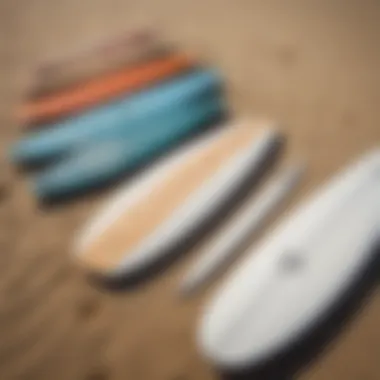
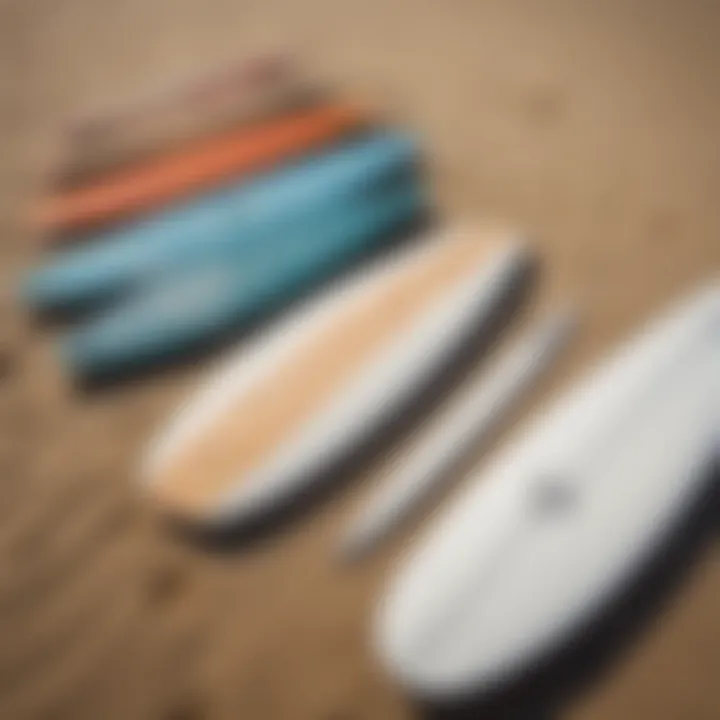
Choosing between private and group surf lessons is one of the first decisions a budding surfer faces. Private lessons typically offer personalized attention from the instructor, allowing for tailored feedback and instruction that aligns with the learner's skill level. This is particularly advantageous for those who may feel anxious in larger groups or for those who wish to accelerate their learning process. In a private setting, there's no pressure to keep up with classmates, thereby fostering a more comfortable and encouraging environment.
On the other hand, group lessons can provide a lively atmosphere where newcomers can bond over shared experiences. The camaraderie often found in group settings can lead to increased motivation and learning through observation and interaction with peers. The social aspect might help in alleviating the fear of falling or making mistakes, which is often a concern for beginners. Generally, group classes come at a lower cost per person, making them a more budget-friendly option. Ultimately, the choice between private and group lessons hinges on personal learning preferences, comfort levels, and budget considerations.
Specialized Technique Classes
For surfers looking to refine their skills beyond the basics, specialized technique classes can be immensely beneficial. These classes focus on specific aspects of surfing, such as paddling techniques, wave negotiation, or performance maneuvers like cutbacks and aerials. They are often designed for those who already have a foundational understanding of surfing but want to elevate their game.
Participating in these focused sessions allows learners to dive deep into particular skills, which can lead to noticeable improvements. Instructors in specialized classes can often provide insights that mainstream classes may not cover. Surfers who wish to hone their style or tackle advanced waves should seriously consider these classes, as they provide a concentrated learning experience tailored to navigating the ocean's nuances effectively.
"Surfing is not just about riding waves. It’s about understanding the ocean and the artistry behind each maneuver."
Whether you’re one who prefers the focused attention of a private lesson or thrives in the lively atmosphere of a group, or perhaps, you’re an advanced surfer keen on specialized classes, the types of lessons available in Kapalua cater to every need. Each lesson type paves the way for personal growth and skill enhancement, enriching your surfing journey through the beautiful Hawaiian waters.
What to Expect in a Surf Lesson
Surfing can be both an exhilarating and daunting experience, especially for first-timers. Knowing what to expect during a surf lesson can ease any anxiety and enhance your overall enjoyment. Lessons are designed with progression in mind, ensuring that you grasp not just the fundamentals, but also how to stay safe while having a blast on the water. Here, we’ll delve into the essential components of a surf lesson, from assessing your skill level to practical surfing techniques, ensuring you feel prepared and informed.
Initial Assessment of Skill Level
Before anything else, most surf instructors will conduct an initial assessment of your skill level. This is not just a formality; it’s crucial for tailoring the lesson to your unique needs and experience. This assessment typically involves a few simple questions:
- Have you ever surfed before?
- What type of board have you used?
- Are you comfortable in the water?
Understanding these factors helps instructors customize the lessons. If you’re a novice, lessons will focus on basics like paddling, balance, and surf etiquette. On the other hand, if you’re more advanced, instructors can guide you through refining your techniques or tackling more challenging waves. This tailored approach helps maximize your learning and enjoyment.
Safety Briefings and Instructions
Safety is paramount in any surfing lesson. In Kapalua, instructors prioritize ensuring that every student knows how to navigate the surf safely. Typically, the lesson will begin with a thorough safety briefing, which may cover the following:
- Understanding surf conditions: Instructors will explain how to observe surf conditions, the significance of tides, and recognizing potential hazards.
- Rip currents: Awareness of rip currents is crucial. You’ll learn how to identify them and the steps to take if caught in one.
- Equipment safety: You will also go over how to properly handle your surfboard. This includes advice on where to store it and how to avoid collisions.
These briefings don’t just keep you safe; they build confidence as you head into the water, preparing you mentally for the surf challenges ahead.
Practical Surfing Techniques
Once the assessments and safety briefings are out of the way, it's time to hit the waves. Practical surfing techniques encompass a range of skills vital for any aspiring surfer. During this phase of the lesson, you might encounter:
- Paddling: Mastering how to paddle effectively is key. You will practice positioning your body on the board and using your arms to navigate the water.
- Pop-up: Learning how to transition from lying on the board to standing is one of the most pivotal skills. Your instructor will guide you through the pop-up technique, ensuring that you can do it fluidly without losing balance.
- Reading waves: Developing the ability to read waves is crucial for catching them. Instructors will often share tips on timing your paddling to match the wave's energy.
"It's not just about catching waves; it's about dancing with the ocean and understanding its rhythm."
Mastering these practical techniques can significantly boost your surfing prowess. More than just physical skills, you’ll also gain a deeper appreciation for the balance between surfer and sea.
In summary, surf lessons in Kapalua focus on creating a safe and engaging learning environment, making sure you know your starting point, understand the dangers involved, and acquire the hands-on skills needed to connect with the waves. This approach not only fosters competence but also cultivates a love for the sport.
Choosing the Right Surf School
When it comes to learning to surf in Kapalua, selecting an appropriate surf school stands as a critical factor in the entire experience. Not only does the right school improve your chances of mastering surfing techniques but it also enhances safety awareness, knowledge of local conditions, and overall enjoyment. Whether you are a novice eager to catch your first wave or an experienced surfer seeking to refine skills, taking the time to evaluate and pick the right surf school can make all the difference.
Accreditation and Credentials of Instructors
The qualifications of surfing instructors can vary wildly. Accredited schools, which frequently undergo evaluation by national water sport associations, are usually worth considering. The International Surfing Association and similar bodies set standards that ensure instructors are well-versed in both surfing skills and safety protocols. You want instructors who not only have a solid background in surfing but have extensive training in first aid as well. This combination becomes all the more essential when navigating the unpredictable ocean environment of Kapalua.
Instructors should ideally have certifications that reflect their expertise, such as lifeguard training or specialized surf coaching qualifications. Doing a little background research on your potential instructors can illuminate their experience and give you peace of mind.
Reviews and Testimonials from Past Students
No marketing material is quite as effective as a solid review from someone who’s walked that plank before. Searching for testimonials from previous students can provide you with insights into what you might expect from a surf school. Check online platforms— reading reviews on TripAdvisor, Yelp, or even localized groups on Reddit can guide you.
Think of it this way: a school with consistent positive feedback on its teaching methods, tailored lesson plans, and overall atmosphere can often deliver a better experience than flashy marketing.
"The best surf lesson I ever took was with a local instructor who knew the waters inside and out. He adapted to my learning style flawlessly!"
Location and Accessibility of Surf Schools
The geographical setting of a surf school often plays a more significant role than one might assume. A surf school located close to beginner-friendly beaches, like Napili Bay or Kapalua Bay, can minimize travel time, allowing more time in the water. Accessibility is crucial too. Think about how easy it is to get to and from the school, parking availability, and whether they offer transportation services if needed.
Also, consider the size of the school. Smaller groups often mean more personalized attention, while larger establishments might offer a wider array of classes. A well-situated class less than a stone's throw from the surf breaks can turn potential distractions into valuable lessons where every moment counts.
Equipment Considerations for Beginners
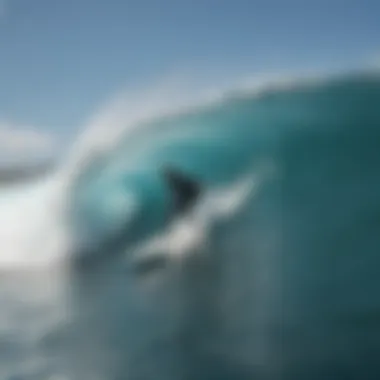
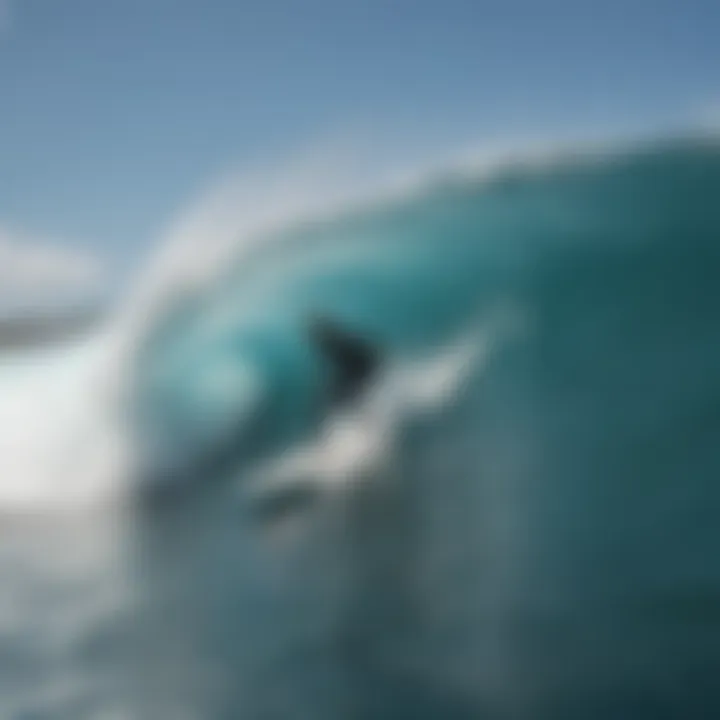
When venturing into the world of surfing, especially for those just starting, the choice of equipment becomes a crucial element in fostering a positive and safe learning experience. From surfboards to safety gear, selecting the proper items not only enhances performance but also boosts confidence in the water.
Choosing the Right Surfboard
Selecting the right surfboard can feel a bit like trying to find a needle in a haystack. There are several types to consider, each catering to different skill levels and surfing styles. For beginners, wide and stable boards are often the best bet. These boards provide better buoyancy, making it easier to paddle and catch waves. A soft-top surfboard is generally recommended, as it has a forgiving surface that can help prevent injuries while learning.
Length is also a significant factor; longer boards (typically 8 to 9 feet) can offer greater stability and are easier to ride compared to shorter ones. If you're unsure, visiting a local surf shop for advice or renting boards to test out different sizes can prove beneficial.
In summary, when choosing a surfboard, consider the following:
- Type: Soft-top boards for beginners.
- Length: Aim for 8 to 9 feet.
- Width: Wider boards help with balance.
Essential Safety Gear
Safety should be the cornerstone of any surfing session. Equip yourself with the necessary gear to protect yourself while enjoying those glorious waves. First and foremost are leashes, which connect the surfer to their board, ensuring you don’t lose it in the water after a wipeout. A quality leash should match your board's length and provide security.
Adding to the checklist is a wetsuit, which is not just for warmth. Wetsuits can protect against the sun, abrasions, and jellyfish stings as well. You'd be surprised how much a bit of padding can help when you're learning to navigate the surf.
Additionally, consider wearing rash guards, which offer protection against the surfboard and minimize discomfort from prolonged exposure to saltwater.
Below are essential items for your surfing safety gear:
- Leash: Keeps your board attached to you.
- Wetsuit: For warmth and protection.
- Rash Guard: Prevents rashes and further injury.
"Investing in the right gear is just as important as honing your skills; it's your safety blanket in the unpredictable ocean."
By giving thought to the equipment that supports your surfing journey, you lay down a solid foundation for skill development and enjoyment in the water.
Safety Protocols While Surfing
Surfing is as much about thrill as it is about safety. When you paddle out into the ocean, it’s crucial to remember that the sea can be unpredictable. Thus, understanding and adhering to safety protocols can make the difference between an exhilarating experience and a perilous one. Not only does this knowledge protect you, but it also contributes to the safety of those around you, fostering a community of responsible surfers.
Understanding Rip Currents
Rip currents are swift currents that can pull you away from the shore. They are often formed by water returning from the beach after a wave breaks. Knowing how to identify these currents can significantly influence your safety while surfing. Here are a few pointers:
- Look for differences in water color: Rip currents typically appear darker than the surrounding water because they are full of sediment.
- Notice the waves: If you see waves breaking consistently in one area but not in another, that might indicate a rip current.
- Stay calm: If caught in a rip, resist the temptation to swim directly against it. Instead, swim parallel to the shore until you’re out of the current, then head back to the beach at an angle.
"Knowledge is power, especially when it comes to surfing safety."
Respecting Other Surfers and Wildlife
Surfing is not just about riding waves; it's a shared experience on the water. Respecting fellow surfers and the local wildlife enhances everyone's enjoyment and safety. Here are some crucial points to keep in mind:
- Adhere to surf etiquette: Always understand who has the right of way on the waves. If someone is already riding a wave, resist the urge to drop in. This consideration fosters respect and reduces the risk of collisions.
- Be mindful of your surroundings: Keep an eye out for wildlife such as turtles, dolphins, or other marine life. If you see them in the water, give them space. Taking care of our ocean friends ensures a balanced ecosystem.
- Practice patience: The ocean is not a racecourse. If conditions are crowded, wait for your turn. Getting frustrated only leads to poor decision making.
Understanding these protocols can prepare one for a more enjoyable and safer surfing adventure.
By respecting the ocean and other surfers, you not only protect yourself but also contribute to a culture of safety in surfing. It's this shared respect that keeps the spirit of Aloha alive in Hawaii's surfing community.
Skill Development and Progression
Skill development and progression are fundamental components of learning to surf, especially in a vibrant surfing haven like Kapalua. Surfers often arrive brimming with enthusiasm, eager to ride the waves. However, without a clear path for growth, it's easy to drift like a lost board during a lull in the surf. Setting structured goals and understanding the progression through different skill levels can profoundly enhance both the experience and efficacy of surf lessons.
Setting Realistic Goals for Improvement
Establishing achievable goals is crucial for surfers at all stages, from novice riders just learning how to balance on a board to experienced individuals looking to hone their turns. The first step is defining clear and specific objectives. For example, instead of vaguely aiming to "get better at surfing," aspiring surfers might set measurable goals, such as paddling out to catch waves consistently or mastering turns within a set timeframe.
- Short-term goals: These can include mastering basic paddling techniques or riding a wave without falling. Achievements like these bolster confidence and enthusiasm.
- Long-term goals: More seasoned surfers might consider targets such as conquering specific surf spots known for their challenges or performing complex maneuvers.
Goals should be revisited and adjusted periodically. Progress is often non-linear, with phases of rapid improvement followed by plateaus. Acknowledge that frustration can be part of the learning curve; it's all about the journey. Remember, "Rome wasn't built in a day"— and neither is a skilled surfer!
Pro Tip: Reflection after each session can help in understanding which skills need more practice and what tactics worked well.
Practicing Outside of Lessons
The real magic in surf progression happens outside the formal lessons. While instructors provide essential techniques and safety protocols, it's the practice that transforms knowledge into muscle memory. Here are some strategic ways to get the most out of independent practice:
- Frequent Beach Visits: Even without lessons, regular trips to the beach to observe conditions and practice paddling or balancing on a board can be invaluable.
- Surfing with Friends: Teaming up with fellow surfers can foster a fun and relaxed atmosphere while learning. Friends can provide tips, critique form, and even challenge you to push beyond comfort zones.
- Utilizing Online Resources: Many surfers turn to platforms like Reddit and YouTube, where they can find instructional videos or community discussions that offer insights and techniques to refine.
- Focus on Fitness: Surfing also demands physical fitness and flexibility. Engaging in workouts, yoga sessions, or even swimming can help improve the stamina and strength necessary for paddling and balancing.
"Patience and persistence have a magical effect before which difficulties disappear and obstacles vanish."
— John Quincy Adams
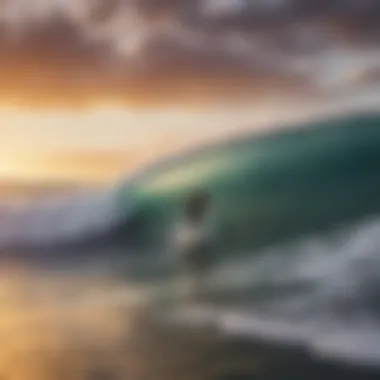
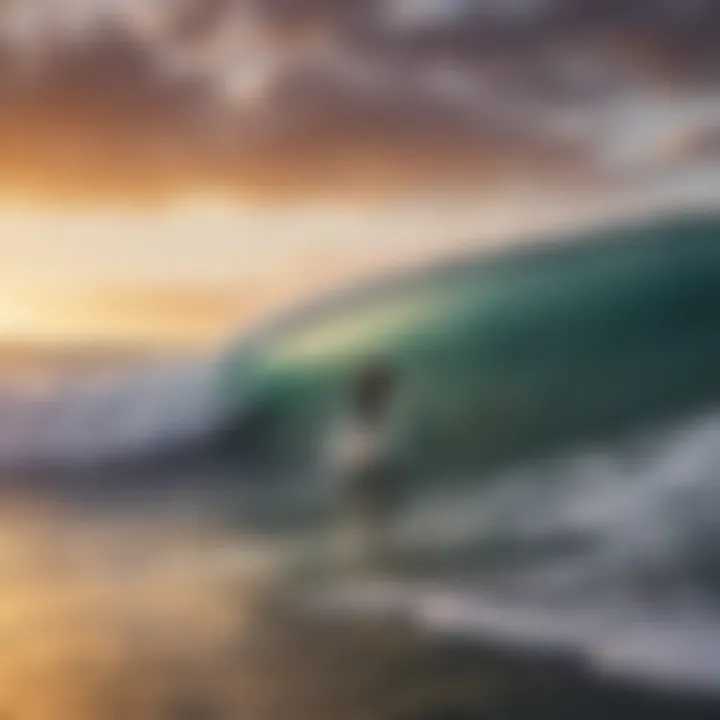
By adopting these practices, aspiring surfers can bolster their lessons, ensuring steady improvement with each session spent on the water. In the picturesque setting of Kapalua, the waves are not just seen as a challenge but rather an opportunity to grow, explore, and connect with nature.
Exploring Kapalua’s Surf Spots
Kapalua offers a vast array of surf spots that cater to all skill levels. Recognizing the unique features of each location not only enriches the surfing experience but also promotes safety and personal growth in one’s surfing capabilities. Choosing the right surf spot can make all the difference, whether you’re just beginning or looking to tackle more challenging waves. Each beach in Kapalua provides distinct conditions, waves, and environments, allowing surfers to dive deeper into their craft while enjoying the natural beauty surrounding them.
Best Beaches for Beginners
If you’re new to surfing, finding a calm and welcoming beach is key. Kapalua is home to several beginner-friendly spots, where gentle waves and clear conditions prevail. Among these:
- Napili Bay: This is often hailed as one of the best places for beginner surfers in Kapalua. Its soft sandy bottom and consistent, small waves create an approachable environment for those just starting out. Additionally, there are plenty of surf schools nearby.
- Kapalua Bay: Enclosed by lush greenery, this bay offers a sheltered area ideal for learning. The waves here are manageable for novices, making it a suitable space to get accustomed to balancing on a board. The stunning backdrop adds to the allure, inviting kooks to soak up not just the sun but also the Aloha spirit.
- Oneloa Beach: Less crowded than some other spots, Oneloa provides a serene atmosphere for those starting out. The waves are mild, and it is comparatively less intimidating than more advanced locales, which helps build confidence without overwhelming new surfers.
One message resonates clearly: having the right setting makes all the difference. As beginners, finding themselves in a supportive and safe environment allows room for mistakes and, more importantly, growth.
Challenging Locations for Advanced Surfers
For those who have some experience under their belt, Kapalua also boasts more challenging surf spots that come alive when the conditions are just right. But make no mistake, these locations demand respect and skill:
- Honolua Bay: Often considered a surfing gem, Honolua Bay is not for the faint-hearted. The waves can get big, especially during the winter months, and they require good technique and awareness. Surfers here are rewarded with thrilling rides and stunning scenery, but it’s crucial to know your skill limits and assess the conditions beforehand.
- Slaughterhouse Beach: An aptly named spot known for its powerful swells, Slaughterhouse can present a real challenge even for seasoned surfers. The surf can change in an instant, and understanding how to ride those hefty waves safely is critical.
- Maalai Point: This spot is typically less crowded than other advanced areas, making it appealing for those looking to push their limits. The surf can be unpredictable, so strong skills and situational awareness are a must.
"The ocean is a teacher. It rewards those who take the time to learn its rhythms and flows."
Cultural Significance of Surfing in Hawaii
In Hawaii, surfing is not merely a sport; it embodies a profound cultural essence that runs deep through the islands’ history and identity. It represents a connection to the sea, a celebration of nature, and, ultimately, a way of life rooted in community and tradition. For those considering Kapalua surf lessons, understanding this cultural significance is paramount, as it enriches the entire experience.
Surfing in Hawaii dates back to ancient times when it was an activity predominantly engaged in by royalty and high-ranking chiefs. Boards were crafted from the sacred wood, making them not just tools of sport but objects of reverence.
Additionally, there’s a sense of pride in preserving these traditions. Learning to surf in a place like Kapalua means participating in a legacy crafted over centuries. It’s about more than riding waves; it’s about becoming part of a historical narrative that celebrates connection to the land and ocean. Therefore, surf lessons in this region offer a unique perspective, combining physical skill with cultural appreciation.
Surfing Traditions and History
The roots of surfing trace back to the Polynesian voyagers who navigated across the vast Pacific Ocean. These early surfers engaged in a variety of styles and techniques that evolved into what we recognize today. The sport was a communal activity that strengthened social ties, as families and friends would gather on the beaches to share in the excitement and camaraderie.
In Hawaii, surfing had a special role in the spiritual lives of ancient Hawaiians. They believed the ocean was a source of life, and riding its waves was a way to honor the gods. Certain locations were deemed sacred, and surf spots were often reserved for particular social classes, reflecting the impact of stratification on community practices.
Today, this rich history is celebrated in various forms, from luaus to surfing competitions. The Vans Triple Crown of Surfing, for instance, pays homage to the sport's roots while showcasing elite talent in a global arena. This connection to history is what many surfers in Kapalua hope to experience when they take their first lesson- not only mastering the waves but also becoming part of a storied heritage.
The Role of Aloha Spirit in Surfing
The Aloha Spirit encapsulates the essence of Hawaiian culture. It’s about love, compassion, and respect for one another and for the environment. When it comes to surfing, this spirit plays a crucial role in shaping interactions both in and out of the water.
When riding the waves, surfers are encouraged to embody the Aloha Spirit by treating each other with kindness. There’s a well-known saying among local surfers: "Paddle out, respect the ocean, respect each other." This camaraderie is essential, especially in crowded surf spots. The unwritten rules of the ocean emphasize the need to share waves and take turns, minimizing conflicts and promoting harmony among surfers.
Moreover, the Aloha Spirit extends to care for the environment. Many surf schools in Kapalua emphasize eco-friendly practices, teaching students the importance of preserving marine life and the beauty of the islands. This dedication to both people and the planet is a hallmark of Hawaiian surfing culture and sets the tone for what learners can expect in their journey through surf lessons.
"In surfing, Aloha is more than just a word. It’s a way of life that fosters respect for others, the ocean, and ourselves."
Environmental Awareness in Surfing
Surfing is often viewed as just a thrill-seeking sport or a way to enjoy the ocean. However, with the waves crashing and the tides changing, it carries a deeper responsibility—one that transcends mere enjoyment. Understanding environmental awareness in surfing means embracing the role surfers play in the health of our oceans. This is particularly vital in gorgeous spots like Kapalua, where natural beauty coexists with delicate marine ecosystems.
Sustainable Practices for Surfers
Engaging with the waves goes hand-in-hand with making conscious choices. Sustainable practices are essential for minimizing harm to marine environments and ensuring that the surf culture thrives for generations to come. Here are some ways surfers can make a meaningful impact:
- Choose Eco-friendly Gear: Selecting surfboards crafted from sustainable materials, such as epoxy or bamboo, can significantly reduce the ecological footprint.
- Practicing Minimalism: Embracing a simple approach to gear can lessen waste. For instance, using just one or two versatile boards instead of a quiver.
- Reducing Plastic Use: Surfers should gear their lives toward less plastic. Using reusable water bottles and bags during surf trips not only reduces waste but encourages others to think critically about their choices.
"A surfer's connection to the ocean is deeply personal; it's time we reflect that connection in our lifestyle choices."
Preserving Ocean Life and Habitats
The ocean is home to an incredible array of wildlife, and safeguarding it is paramount. Surfers often interact with marine ecosystems, thus reinforcing their role as guardians of the waters. Here are some fundamental considerations:
- Awareness of Marine Life: Knowing what species inhabit the waters and their behaviors can help surfers avoid harm to them. For example, respecting seasonal breeding areas is crucial.
- Participating in Beach Clean-Ups: Engaging in local clean-up initiatives can foster community spirit and directly benefit ocean health. Organizing as a group not only gets the job done faster but strengthens the connection between surfers and their environment.
- Advocating for Environmental Policies: Supporting laws and policies that protect marine habitats, such as reef conservation or pollution control, is vital. Surf schools can encourage students to get involved and stay informed.
Being a surfer is more than just riding waves; it involves a commitment to environmental stewardship. By adopting sustainable practices and actively engaging in habitat preservation, surfers can ensure that Kapalua’s oceans remain vibrant for future surf enthusiasts.
Epilogue and Final Thoughts
In the world of surfing, mastering the waves is not just about catching the right moment; it's also about embracing the journey that brings you to the water's edge. This article has navigated through the various dimensions of surf lessons in Kapalua, illuminating the intricacies that make these experiences so enriching.
One of the key takeaways from this comprehensive guide is the importance of selecting a surf school that aligns with your specific needs and aspirations. Instructors' accreditation and the school's overall reputation can greatly influence the quality of your lesson. Take the time to read reviews and testimonials as they can offer valuable insight into what you can expect.
The lessons you take don't just teach you how to ride a wave; they provide an immersive way to connect with Hawaiian culture and its deep-rooted respect for the ocean. Every session on the water is an opportunity to gain not just skill, but an understanding of the traditional practices that surround this beloved sport. As you strive to improve your surfing, remember to embrace the Aloha spirit. It’s not just about individual accomplishment, but also about community and respect for fellow surfers and the environment.
Furthermore, parts of this guide stressed the critical nature of safety protocols. Being aware of rip currents and respecting wildlife can protect both you and the delicate ecosystem of the ocean. Taking these considerations into account is essential for a fulfilling experience on the water.
Ultimately, whether you’re a beginner trying to find your footing on the board or an experienced surfer looking to hone your skills, surfing in Kapalua offers a wealth of lessons and experiences. The combination of beautiful scenery, expert guidance, and the rich heritage of Hawaiian surfing makes it an ideal destination for all levels of surfers.
"Surfing is not just a sport; it’s a way of life that connects you to the ocean and the community around you."















